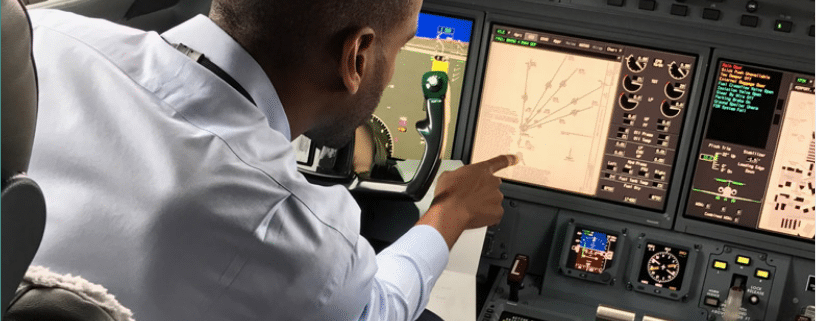“FAA Publishes New 2020 ADS-B Pre-Flight Policy”
When the FAA’s ADS-B Out regulation becomes effective next year, operators will need to predict the availability of the GPS constellation along their planned route and comply with a number of operational stipulations the FAA has outlined in its newly published policy on pre-flight performance requirements.
The new policy comes six months prior to the Jan. 1, 2020 ADS-B Out airspace mandate taking effect. Under the new policy, the FAA is requiring operators to assess how their aircraft’s position-reporting avionics will perform along their filed flight plans.
In the pre-flight planning process, the FAA is requiring pilots to use a preflight availability prediction tool to asses whether or not their aircraft’s GPS receivers can meet the navigation integrity category (NIC) performance requirements outlined by the technical standard order used by the agency to define the accuracy of position reporting equipment. NIC refers to the containment radius around an aircraft’s reported position, which must be accurate within less than 0.2 nautical miles of its actual airborne position.
Under the new policy, the FAA is specifically targeting operators of aircraft GPS receivers that are not wide area augmentation system (WAAS) compatible. Operators who equip with non-WAAS receivers are more likely to experience performance outages that limit their access to the airspace defined in the rule.
When assessing the GPS performance for their intended flight plan, if an operator determines that the predicted performance will support the proposed flight, the FAA will require the pilot to adjust the route to avoid the area where degraded performance could occur.
“After an operator receives a satisfactory preflight availability prediction for an intended operation, there may be certain conditions that warrant a subsequent prediction. For example, a change in departure time or a change in the GPS satellite constellation as indicated by a Notice to Airmen (NOTAM) may have an effect on the predicted GPS performance for the intended operation,” the policy statement said.
There is also an acknowledgement by the FAA regarding its Exemption 12555 policy, a one-time grant of exemption for aircraft from 14 CFR § 91.227 requirements for operators using GPS receivers when their performance falls below the requirement and backup surveillance is unavailable. The FAA established that exemption to address the performance characteristics associated with the three different variants of GPS receivers that are currently found in air transport category aircraft.
Operators that have qualified for Exemption 12555 do not need to perform a preflight availability prediction. Those who fall outside of the exemption and are flying aircraft with GPS receivers that do not meet the necessary NIC and NAC performance requirements must use either their own preflight availability prediction tool or the FAA’s Service Availability Prediction Tool (SAPT).
Additionally, when pilots receive NOTAMS indicating that planned government GPS interference testing impacting ADS-B Out airspace occurs, they will not require operators to avoid that airspace. A technical evaluation of such occurrences by the agency determined that they have no way of guaranteeing whether an aircraft flying through affected airspace would actually experience GPS performance degradation.
The new pre-flight policy is the latest in a series of new guidelines established by the FAA to help airspace users transition from relying on ground-based radar to ADS-B as the primary air traffic surveillance source in the U.S. In April, a new policy for non-equipped aircraft was published noting that air traffic controllers will only approve non-ADS-B flights when they’re convenient. Avionics manufacturers and installation facilities have also been working to ensure operators know how to deal with ADS-B failures.
As the 2020 mandate draws closer, the commercial airline segment of the U.S. flying community appears to be on track to have nearly all of their aircraft requiring upgrades equipped. The general aviation community remains the lowest equipped segment, with the U.S. registered helicopter fleet remaining the lowest equipped segment.




